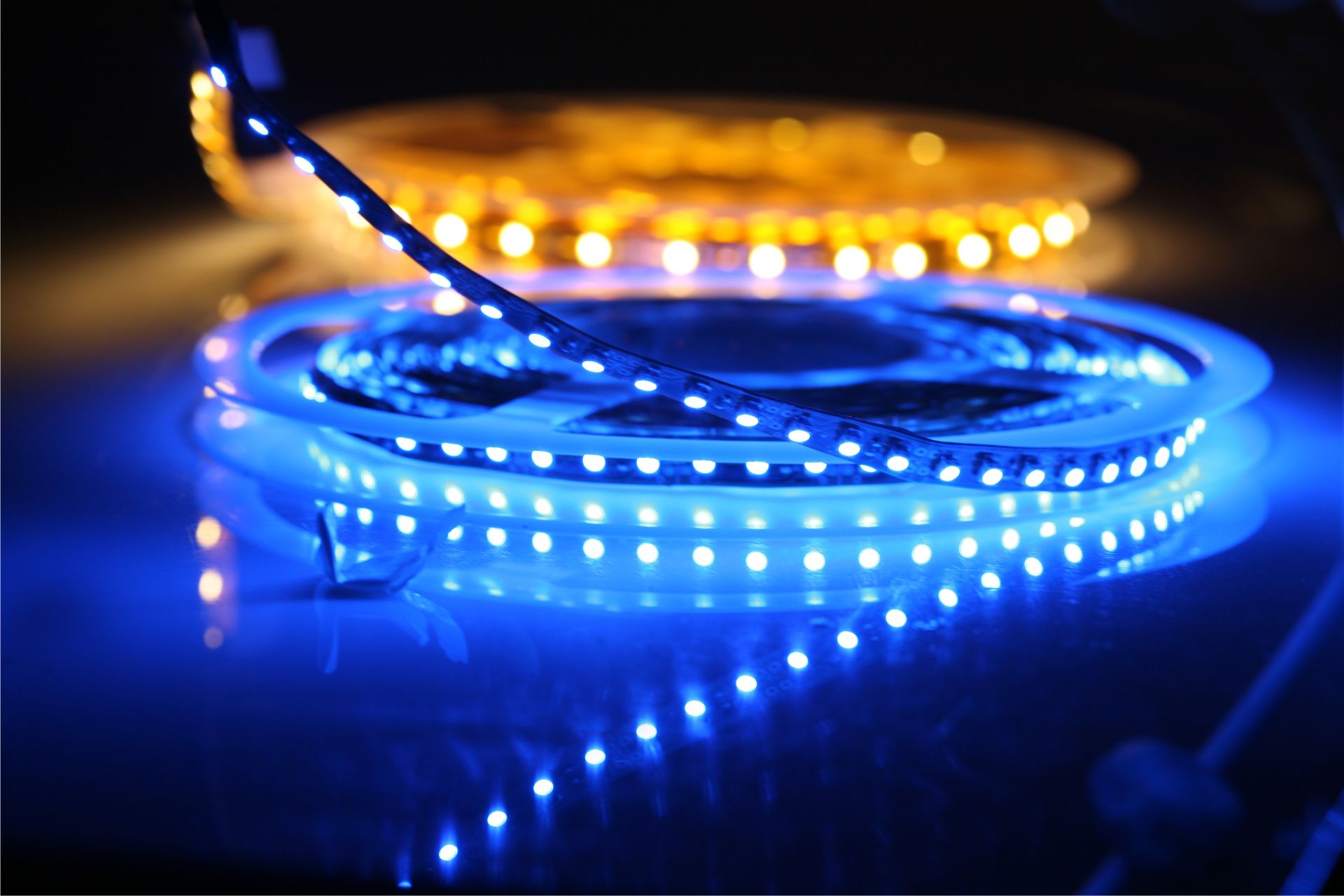Everyone loves LED lights. They are efficient and reliable. But how do you operate them? Naturally, you are better off plugging the lights into a wall outlet. But what if you don’t have a wall outlet in the vicinity?Is an extension cord a viable solution?
Can You Plug LED Lights Into An Extension Cord?
LEDs can easily run on an extension cord. Their energy consumption is unlikely to overwhelm your extension cord. Of course, there are plenty of exceptions that could lead to disaster. But in an ideal situation, you can run LED lights on an extension cord without burning your house down
When it comes to managing and operating lighting systems, the type of light matters. Some people think that all lights are the same. They don’t see the point in differentiating one bulb from another.
However, all bulbs are not the same. Many people use incandescent bulbs because they are cheap. You can also find them in most stores.
However, incandescent bulbs use more power than LEDs. And yet, you can run incandescent bulbs on an extension cord. The breaker size is just as important. If you have a string of incandescent bulbs, you should calculate their total wattage before comparing it to the size of the circuit.
Naturally, you must change the total wattage to amps before you proceed, but that process is very easy. Any online calculator you find can perform the conversion.
If the circuit size exceeds the total amps of the bulbs, you can run the bulbs on the circuit. If the circuit is too small, you can upgrade to a larger circuit or reduce the number of bulbs.
But again, you can run incandescent bulbs on the 15A or 20A circuits found in most homes. If that is true, you can easily run LEDs on conventional 15 or 20A circuits.
They are far more efficient. For instance, a 50W LED bulb doesn’t use 50 watts. Instead, it will generate the same amount of light as a 50W incandescent bulb while consuming only a small fraction of the power.
Read Can You Plug An Extension Cord Into Christmas Lights?
Is It Safe To Use Extension Cord With Led Lights?
For the most part, this practice is safe. However, many experts discourage homeowners from plugging their lights into extension cords because they are inherently dangerous. If you overload the extension cord, you may start a fire. This is the biggest challenge.
Fortunately, you can take specific measures to make this practice less dangerous, including:
1). Don’t Use Extension Cord As Permanent Solution
First of all, I want you to remember that extension cords are temporary solutions. You cannot use them as a long-term tool for operating your LEDs, regardless of the situation.
The more use the extension cord gets, the greater the probability of a fire starting.
Don’t take any chances. Use the extension cord during emergencies. But once the opportunity arises, ask an electrician to add outlets in the vicinity of the LEDs.
2). Use GFCI
I want GFCI technology in areas that demand GFCIs. That includes bathrooms, kitchens, and basements. Extension cords do not negate the need for GFCIs, especially outside.
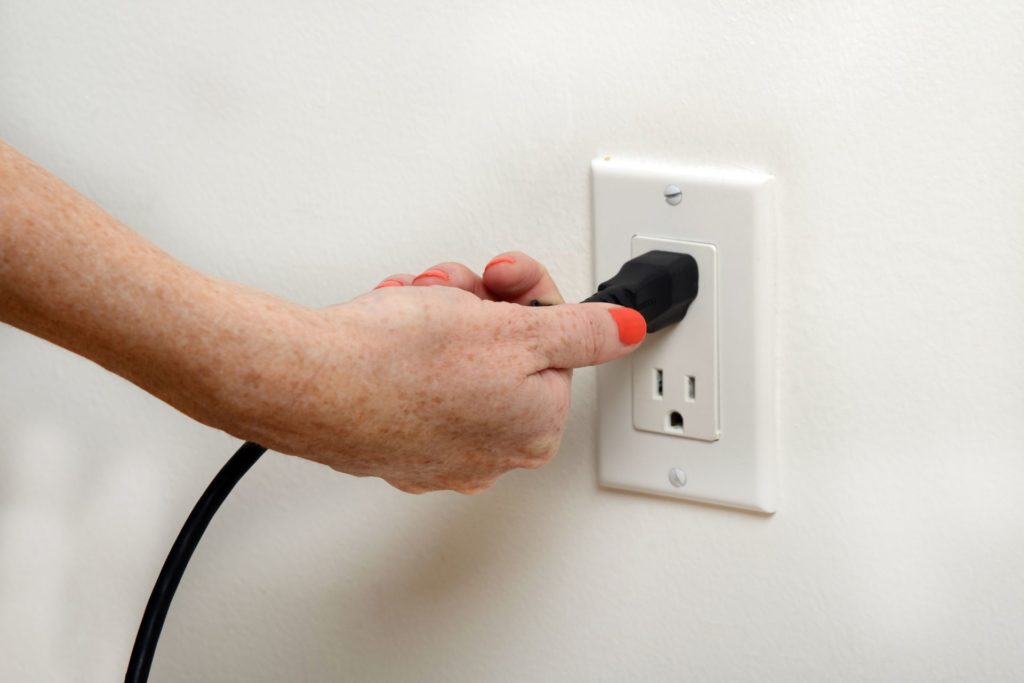
If you want to operate exterior LEDs, use GFCIs to protect your equipment from ground faults.
3). Match The Rating
Match the power requirements of the lights to the rating of the extension cord. Power strips and extension cords come in various sizes, formats, and ratings.
Get the thickest cable you can find.
Thick cords can transmit large volumes of current without overheating. Thin cords are the opposite. They will overheat if you overwhelm them with electricity.
Some people buy weak power strips because they have underestimated the electrical requirements of the lights. And in truth, LEDs use very little power. However, they can still overload an extension cord if you have a sizable collection of LEDs and a weak power strip.
People buy weak extension cords because they are incredibly cheap. However, it won’t take long for a cheap extension cord to overheat.
4). Use Outdoor Extension Cord
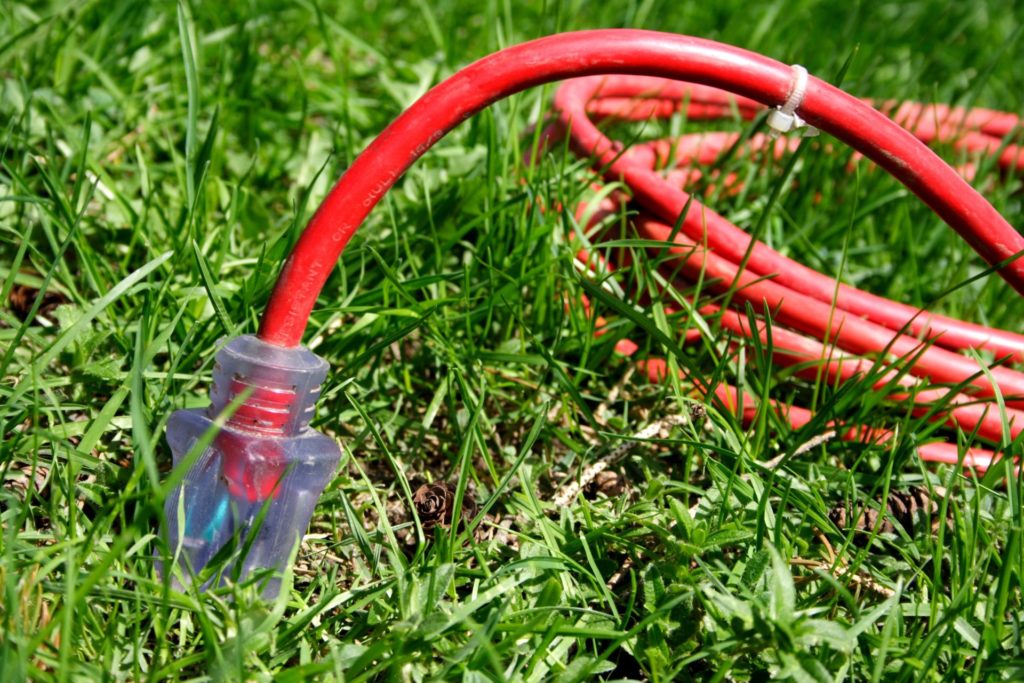
I want you to keep the setting in mind. Use indoor extension cords for interior applications and outdoor extension cords for exterior applications.
You can use outdoor extension cords inside, but it is a waste of money because they have insulation you do not need. On the other hand, an indoor extension cord cannot survive outside because it cannot withstand strenuous conditions such as direct sunlight.
An indoor extension cord with the appropriate thickness can still fail if you use it outside.
Read Can You Plug A Lamp Into An Extension Cord? With Safety Tips
What Happens When You Plug LED Lights With An Extension Cord?
Nothing will happen. The LEDs will work. After all, they have meager electrical requirements. Therefore, if you have a decent extension cord or power strip, it will operate the lights safely.
This practice is only problematic when you overwhelm the extension cord. Some people won’t hesitate to dismiss this idea because the total wattage of their LEDs is too low to overload the extension cord.
However, the LEDs are not your only concern. Do you live alone? If your home has other inhabitants, one of them may connect a heavy-duty appliance like a washer or dryer to the extension cord.
This is more than enough to overload the extension cord. It may explode. Even if it doesn’t, the arcing can start a fire.
What Gauge Extension Cord Is Best For LED Lights?
Lights are low-duty items. You can run them on 18AWG extension cords with two prongs. You can exceed 18AWG if you want. The thicker the cord, the safer you will feel.
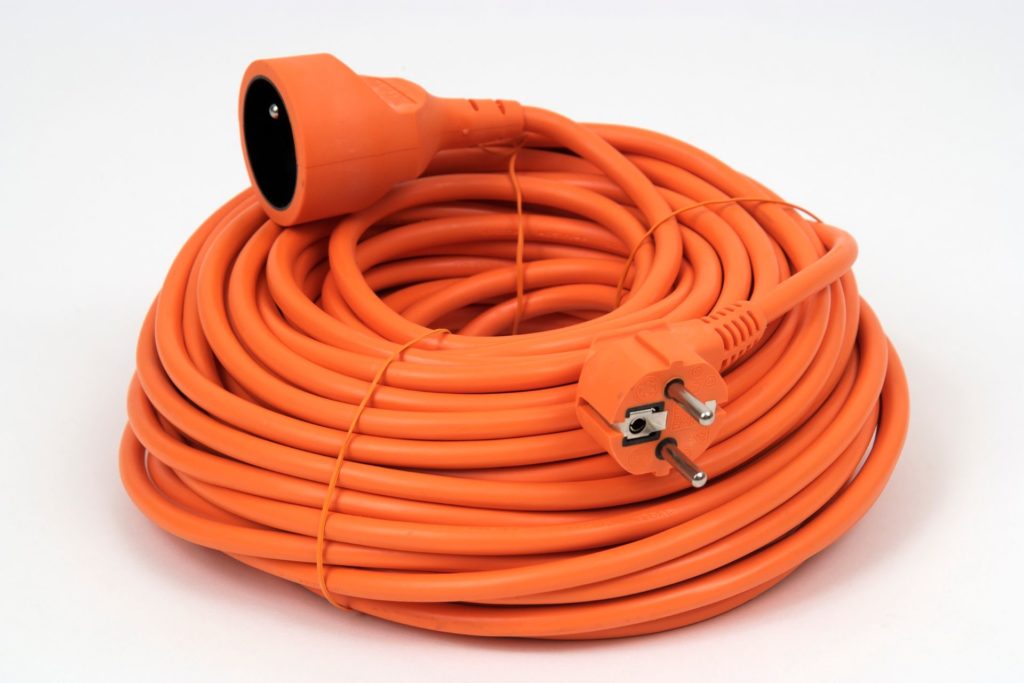
Extension cords can be light, medium, or heavy-duty. Heavy-duty extensions have a third prong because they have a grounding component. They will operate freezers, microwaves, drills, and the like.
Any extension 14AWG and above is heavy-duty. Medium-duty falls between 12 and 16AWG, depending on the length. Medium-duty devices include TVs and computers.
Although, most homeowners don’t see the point of buying 12 or even 10AWG extension cords to run some LEDs.
How Long Can A LED Light Extension Cord Be?
Even though 18AWG is perfectly fine at 25 feet, you are better off raising the gauge to 14AWG for 100 feet.
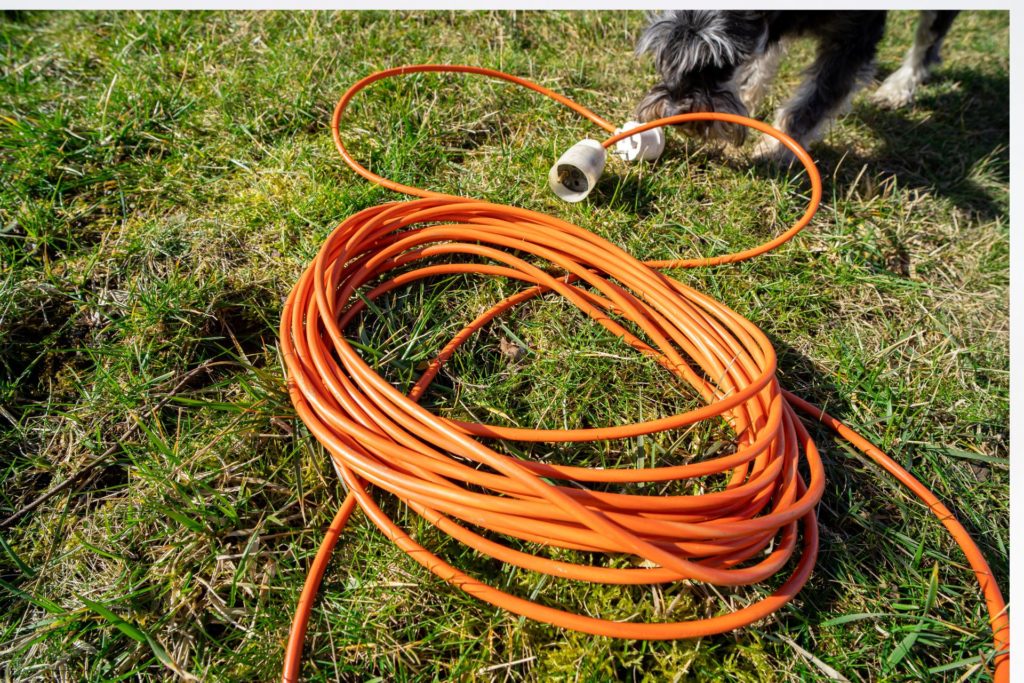
The length matters because it influences factors like resistance and voltage drop. Longer wires are more likely to overheat because the resistance is higher.
The voltage drop is just as problematic because it can affect the efficiency of a device. But LEDs are low-duty items. Their electrical requirements are extremely low. As such, you can get away with higher voltage drops.
But that is not an excuse to pair long extensions with your LEDs. You may start a fire. Stick to 25 feet. 50-foot cords can also work. But they will increase the risk of overheating.
Don’t take any chances. Then again, you don’t always have a choice. Homeowners use extension cords when the nearest outlets are too far for their LEDs to reach.
And if your LEDs are 100 feet away, you don’t have a choice. You need a 100-foot extension cord.
But if you need a long cord, increase the gauge.
Best Extension Cord For LED Lights
You have to account for factors like the gauge and length. But if you don’t have the time to make comparisons, you can choose from these options:
This is a heavy-duty 15A device with lighted plugs and female-to-male connectors. Boasting a lifetime limited warranty, the extension cord uses a thermoplastic elastomer compound to deliver the flexibility people expect. The TPE sheath can survive all weather conditions.
2). DEWENWILS 15-Foot Extension Cord
This is a heavy-duty 12AWG 15A 125V 1875W extension cord with 300V insulation. It has a pigtail triple tap that can accommodate multiple appliances.
The extension cord can withstand temperatures as high as 140 degrees F and as low as -40 degrees F. The PVC jacket will survive the wear and tear extension cords encounter outside.
This 15A 125V 3-prong TPE rubber extension cord can resist everything from extreme weather to fire. It will stand the test of time in exterior settings. The flexible cord can survive -58 to +221 degrees F.
Homeowners will appreciate the Nickel-coated brass blades. Not only are they resistant to corrosion, but they prevent arcing. Agencies in the USA and Canada tested this item before certifying it.
4). Southwire 2549SWUSA1 100FT
This is a 15A 125V extension cord from the United States. The multi-purpose item works inside and outside. You can blame its versatility on the vinyl jacket, which protects against abrasion, moisture, and extreme weather conditions like direct sunlight.
The blades are reinforced. They are unlikely to bend or break. The length is impressive. This extension cord is 100 feet long, which is perfect for homeowners with distant applications.
Don’t worry about the resistance. This extension cord is 12AWG. It is thick enough to transmit the current you need without overheating.

